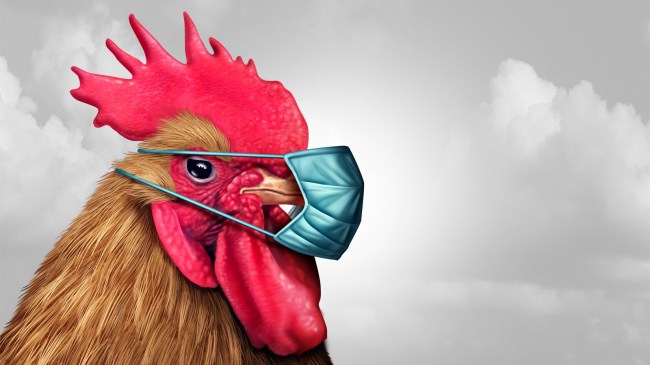iStockphoto
According to Robert Redfield, a former director of the Centers for Disease Control and Prevention (CDC), a bird flu pandemic is coming. It’s only “a question of when.”
Redfield, a virologist who headed the CDC from March 2018 to January 2021, told NewsNation on Friday, “I really do think it’s very likely that we will at some time, it’s not a question of if, it’s more a question of when we will have a bird flu pandemic.
“Unfortunately, bird flu when it does enter humans, has a significant mortality, probably somewhere between 25 and 50 percent mortality, so it’s going to be quite complicated.
“Since 2019, we’ve had a progressive increase in bird flu in chickens and ducks and turkeys in our country. And we’ve seen it now going into a number of mammals, it’s now in over 25 different mammals and I think now, with the llamas recently, it’s now in 27 mammals in the United States.”
Redfield says it will eventually be spread from human to human through aerosol and droplets.
“As it goes into more and more different mammals it’s changing its use of receptors, it’s changing, it’s changing, it’s learning how to use different receptors for dolphins and seals, and it’s learning how to use receptors in bears and polar bears and foxes and raccoons and cats,” Redfield continued. “So it’s going through a lot of changes, and as it picks up some of these new receptors it can get closer and closer to humans.”
Speaking of cats, according to a new study published to the preprint server medRxiv, “One mammalian family, the Felidae, is of particular concern. Felids, known as felines or cats, are susceptible to avian influenza virus infection.
“Felines prey on wild birds and may serve as a host for avian influenza virus adaptation to mammals. Feline-to-feline transmission has been demonstrated experimentally, and real-world outbreaks have been reported.
“Domestic cats are a popular human companion animal and thus provide a potential pathway for zoonotic spillover of avian influenza [bird flu] viruses to humans.”

